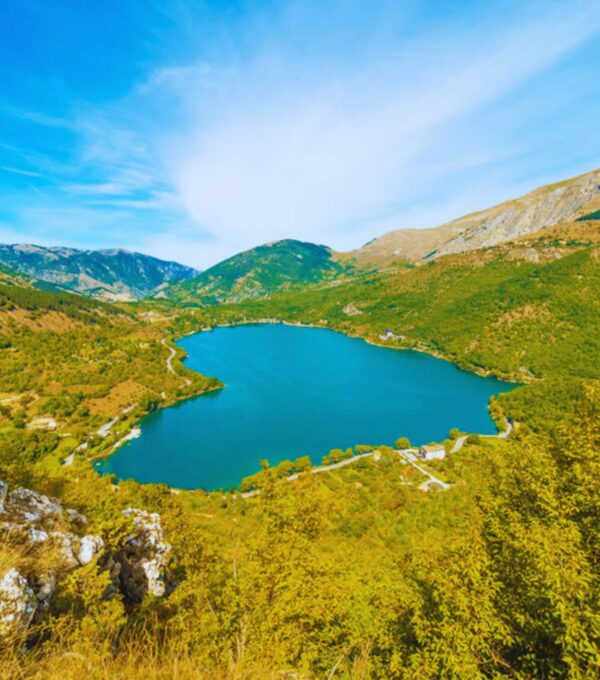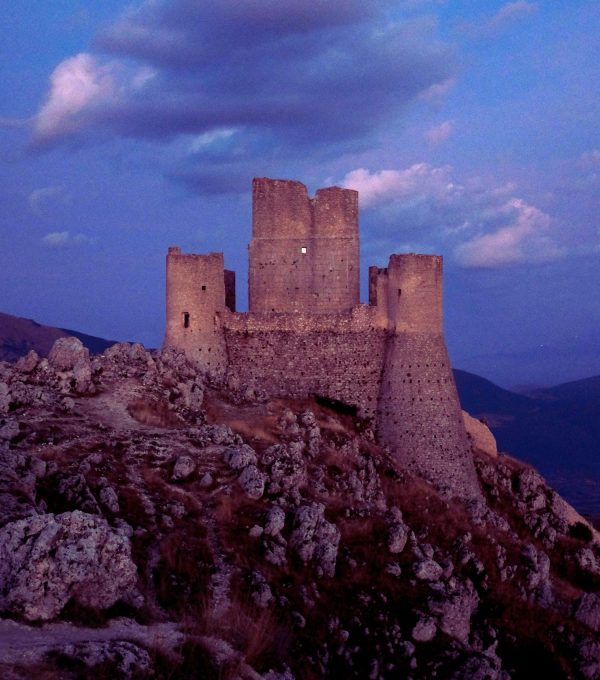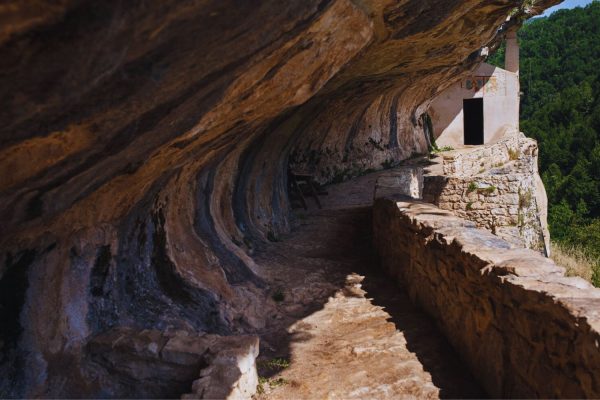Crossing the Abruzzo you can meet many places that can combine fascinating places of historical interest to suggestive points where nature has made something inimitable. An example is the town of Celano, in the province of L’Aquila, which houses the Piccolomini Castle and where, a short distance away, the Celano Gorges were formed.
Celano rises about 800 meters above sea level, in the Abruzzo hinterland, not far from Avezzano. Immersed in the green of the Apennines, it is ideal for those who want to spend a holiday in serenity, forgetting the stress and frenzy of everyday life.
Centuries of history
When you name Celano you can not help but talk about what is his most important monument. We refer to the Piccolomini Castle, whose original construction dates back to the late ‘300. It seems that originally the place was chosen for the construction of some fortifications by Emperor Frederick II of Swabia more than 150 years before the actual works began.
Probably the strategic position has made this point particularly important, pushing the Count of Celano Pietro II Berardi to start this construction. Over time his successors have made some changes, making the structure what we can see today. The original parts of the castle are still clearly visible.
The centuries obviously did not spare the castle some damage, some of which were caused by phenomena of natural origin, such as the earthquake of 1915. They were restored in 1960, several years after the end of World War II.
The Piccolomini Castle today
The Piccolomini Castle is not only a testimony of medieval architecture, but today is a great point of interest for art lovers from all over Italy and beyond. The Museum of Sacred Art of the Marsica has been housed in nine rooms of the fortress.
It is a remarkable exhibition, with unique finds in the world. Elements from various artistic sectors have been selected. They range from more classical art forms, such as sculpture and painting, to expressions intrinsically linked to the world of craftsmanship, such as jewellery and weaving. The finds come from very different eras. They range from evidence of the early medieval period, dating back to the sixth and seventh centuries, to works made during the Modern Age, until the ‘700.
The museum houses, in addition to objects related to the world of Sacred Art, also the Torlonia collection, dedicated to some elements dating back to Roman times. They are very ancient objects and coins, recovered by pure chance while they were carrying out work to drain the lake Ficino.
If you want to visit the Piccolomini Castle and the Museum of Sacred Art contained inside it you can find all the information directly on the site of the municipality of Celano.

Foto: turismo.comune.celano.aq.it
Nature knows how to amaze
After spending a day inside the Piccolomini Castle you could dedicate yourself to the wonders that nature offers in the surroundings of Celano. We are talking about the Celano Gorges, which are part of the area of competence of the regional natural park of Sirente – Velino.
The Celano Gorges are the ideal destination for those who like to explore unspoiled places as much as possible, far from civilization and the hand of man. They have the structure of a canyon, and crossing it is not particularly difficult, although some points are steeper than others. There are many people who choose it every year to do some trekking in company.
Among the various points that make up these Gorges there is a height difference of about 500 meters, with the highest point, the so-called peak, which exceeds 1300 meters. Although the area is dominated by nature you can see some traces of previous structures made by man, such as the hermitage of San Marco ai Casaleni, to which was added the monastery of San Marco. Only remains of both can be seen today.
Crossing the Celano Gorges brings you into contact with the fauna and flora of the place. From the faunal point of view there are many species, such as the peregrine falcon and the owl.
The best time to explore these gorges is definitely in summer, but spring and autumn, in the less rainy and warmer weeks, are also a good option. Humidity is an issue not to be underestimated, because it could make the route quite slippery.
How to get to Celano
Getting to Celano is very simple. The city is well connected both via the highway and the railway.
To reach Celano by motorway, take the A25 Torano – Pescara motorway, where there is the Aielli – Celano exit. From there just follow the signs to reach the town of Abruzzo.
If you decide to travel by train, the railway Rome – Pescara has a station right here, in the center of the small town, with the name of Celano – Ovindoli (ski resort very well known in both Abruzzo and Lazio).
Copertina: turismo.comune.celano.aq.it
Autore: Andrea Prosperi



